Michele Alberti
LIST
CAISAR: A platform for Characterizing Artificial Intelligence Safety and Robustness
Jun 07, 2022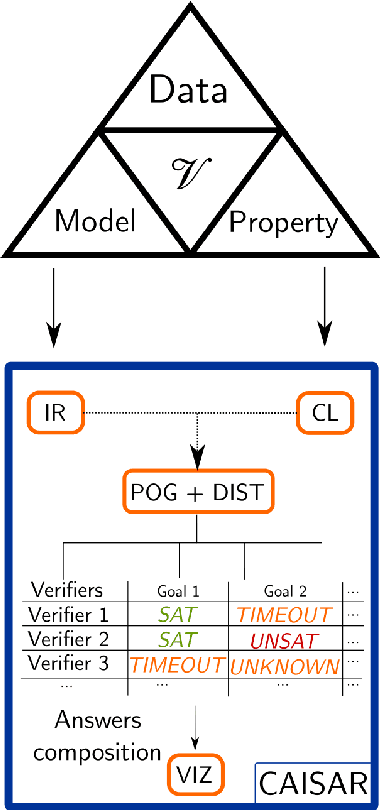
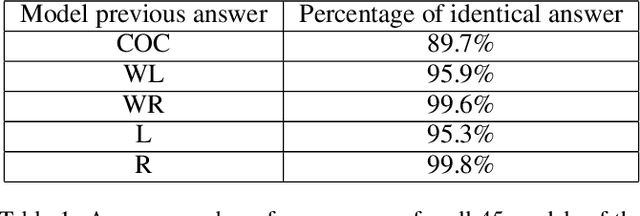
Abstract:We present CAISAR, an open-source platform under active development for the characterization of AI systems' robustness and safety. CAISAR provides a unified entry point for defining verification problems by using WhyML, the mature and expressive language of the Why3 verification platform. Moreover, CAISAR orchestrates and composes state-of-the-art machine learning verification tools which, individually, are not able to efficiently handle all problems but, collectively, can cover a growing number of properties. Our aim is to assist, on the one hand, the V\&V process by reducing the burden of choosing the methodology tailored to a given verification problem, and on the other hand the tools developers by factorizing useful features-visualization, report generation, property description-in one platform. CAISAR will soon be available at https://git.frama-c.com/pub/caisar.
Generating Synthetic Handwritten Historical Documents With OCR Constrained GANs
Mar 15, 2021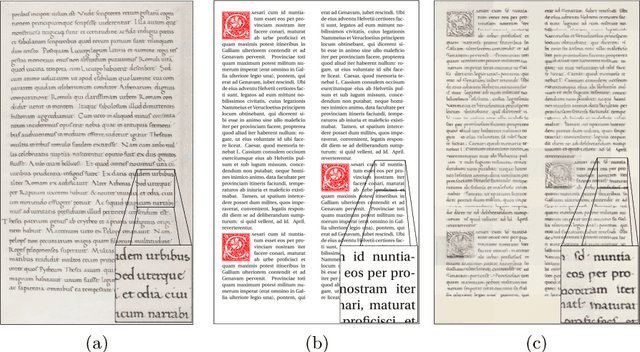
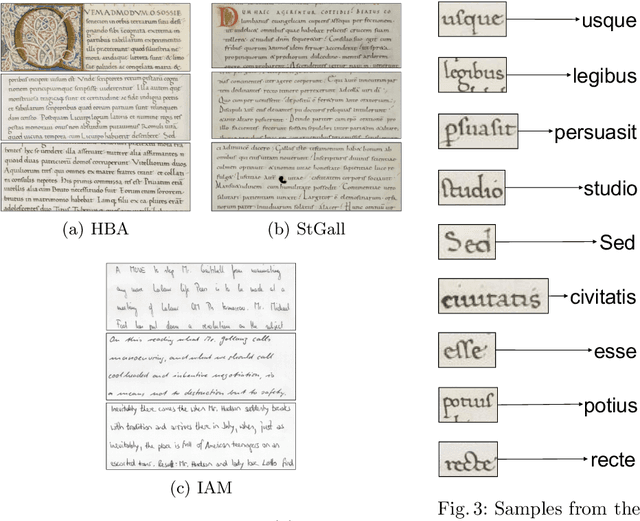
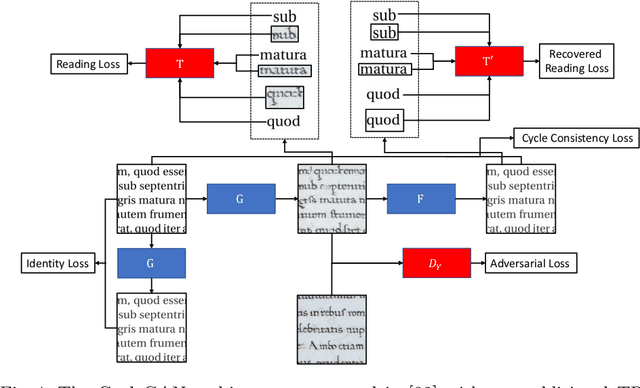
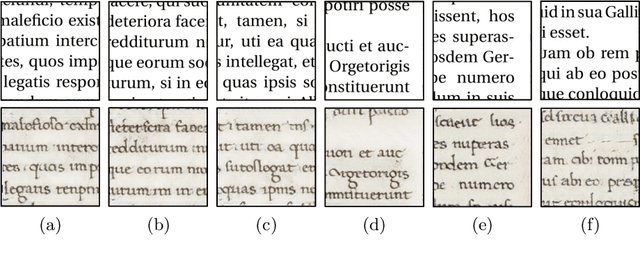
Abstract:We present a framework to generate synthetic historical documents with precise ground truth using nothing more than a collection of unlabeled historical images. Obtaining large labeled datasets is often the limiting factor to effectively use supervised deep learning methods for Document Image Analysis (DIA). Prior approaches towards synthetic data generation either require expertise or result in poor accuracy in the synthetic documents. To achieve high precision transformations without requiring expertise, we tackle the problem in two steps. First, we create template documents with user-specified content and structure. Second, we transfer the style of a collection of unlabeled historical images to these template documents while preserving their text and layout. We evaluate the use of our synthetic historical documents in a pre-training setting and find that we outperform the baselines (randomly initialized and pre-trained). Additionally, with visual examples, we demonstrate a high-quality synthesis that makes it possible to generate large labeled historical document datasets with precise ground truth.
Trainable Spectrally Initializable Matrix Transformations in Convolutional Neural Networks
Nov 13, 2019



Abstract:In this work, we investigate the application of trainable and spectrally initializable matrix transformations on the feature maps produced by convolution operations. While previous literature has already demonstrated the possibility of adding static spectral transformations as feature processors, our focus is on more general trainable transforms. We study the transforms in various architectural configurations on four datasets of different nature: from medical (ColorectalHist, HAM10000) and natural (Flowers, ImageNet) images to historical documents (CB55) and handwriting recognition (GPDS). With rigorous experiments that control for the number of parameters and randomness, we show that networks utilizing the introduced matrix transformations outperform vanilla neural networks. The observed accuracy increases by an average of 2.2 across all datasets. In addition, we show that the benefit of spectral initialization leads to significantly faster convergence, as opposed to randomly initialized matrix transformations. The transformations are implemented as auto-differentiable PyTorch modules that can be incorporated into any neural network architecture. The entire code base is open-source.
Labeling, Cutting, Grouping: an Efficient Text Line Segmentation Method for Medieval Manuscripts
Jul 01, 2019



Abstract:This paper introduces a new way for text-line extraction by integrating deep-learning based pre-classification and state-of-the-art segmentation methods. Text-line extraction in complex handwritten documents poses a significant challenge, even to the most modern computer vision algorithms. Historical manuscripts are a particularly hard class of documents as they present several forms of noise, such as degradation, bleed-through, interlinear glosses, and elaborated scripts. In this work, we propose a novel method which uses semantic segmentation at pixel level as intermediate task, followed by a text-line extraction step. We measured the performance of our method on a recent dataset of challenging medieval manuscripts and surpassed state-of-the-art results by reducing the error by 80.7%. Furthermore, we demonstrate the effectiveness of our approach on various other datasets written in different scripts. Hence, our contribution is two-fold. First, we demonstrate that semantic pixel segmentation can be used as strong denoising pre-processing step before performing text line extraction. Second, we introduce a novel, simple and robust algorithm that leverages the high-quality semantic segmentation to achieve a text-line extraction performance of 99.42% line IU on a challenging dataset.
Improving Reproducible Deep Learning Workflows with DeepDIVA
Jun 11, 2019
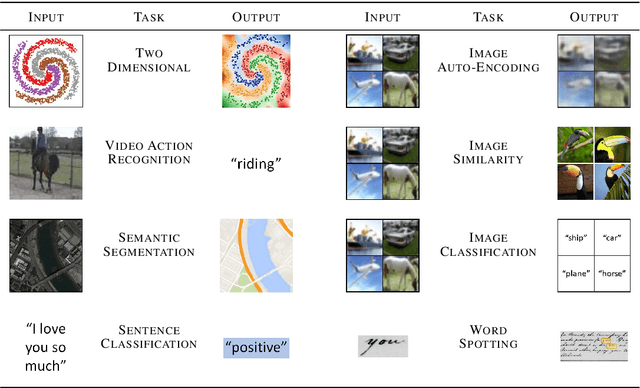
Abstract:The field of deep learning is experiencing a trend towards producing reproducible research. Nevertheless, it is still often a frustrating experience to reproduce scientific results. This is especially true in the machine learning community, where it is considered acceptable to have black boxes in your experiments. We present DeepDIVA, a framework designed to facilitate easy experimentation and their reproduction. This framework allows researchers to share their experiments with others, while providing functionality that allows for easy experimentation, such as: boilerplate code, experiment management, hyper-parameter optimization, verification of data integrity and visualization of data and results. Additionally, the code of DeepDIVA is well-documented and supported by several tutorials that allow a new user to quickly familiarize themselves with the framework.
Survey of Artificial Intelligence for Card Games and Its Application to the Swiss Game Jass
Jun 11, 2019Abstract:In the last decades we have witnessed the success of applications of Artificial Intelligence to playing games. In this work we address the challenging field of games with hidden information and card games in particular. Jass is a very popular card game in Switzerland and is closely connected with Swiss culture. To the best of our knowledge, performances of Artificial Intelligence agents in the game of Jass do not outperform top players yet. Our contribution to the community is two-fold. First, we provide an overview of the current state-of-the-art of Artificial Intelligence methods for card games in general. Second, we discuss their application to the use-case of the Swiss card game Jass. This paper aims to be an entry point for both seasoned researchers and new practitioners who want to join in the Jass challenge.
A Comprehensive Study of ImageNet Pre-Training for Historical Document Image Analysis
May 22, 2019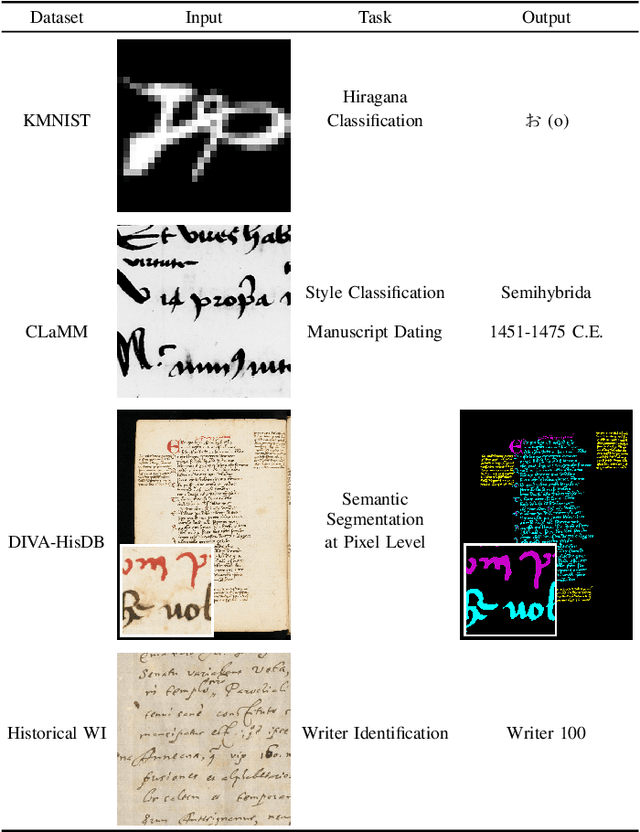


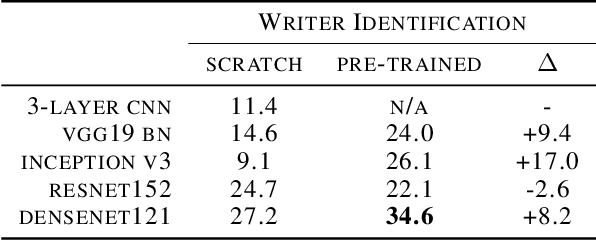
Abstract:Automatic analysis of scanned historical documents comprises a wide range of image analysis tasks, which are often challenging for machine learning due to a lack of human-annotated learning samples. With the advent of deep neural networks, a promising way to cope with the lack of training data is to pre-train models on images from a different domain and then fine-tune them on historical documents. In the current research, a typical example of such cross-domain transfer learning is the use of neural networks that have been pre-trained on the ImageNet database for object recognition. It remains a mostly open question whether or not this pre-training helps to analyse historical documents, which have fundamentally different image properties when compared with ImageNet. In this paper, we present a comprehensive empirical survey on the effect of ImageNet pre-training for diverse historical document analysis tasks, including character recognition, style classification, manuscript dating, semantic segmentation, and content-based retrieval. While we obtain mixed results for semantic segmentation at pixel-level, we observe a clear trend across different network architectures that ImageNet pre-training has a positive effect on classification as well as content-based retrieval.
Leveraging Random Label Memorization for Unsupervised Pre-Training
Nov 05, 2018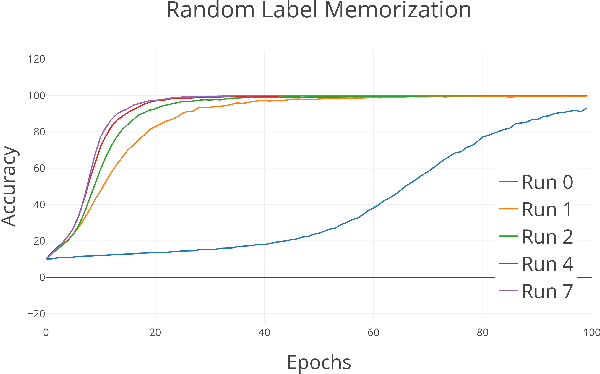

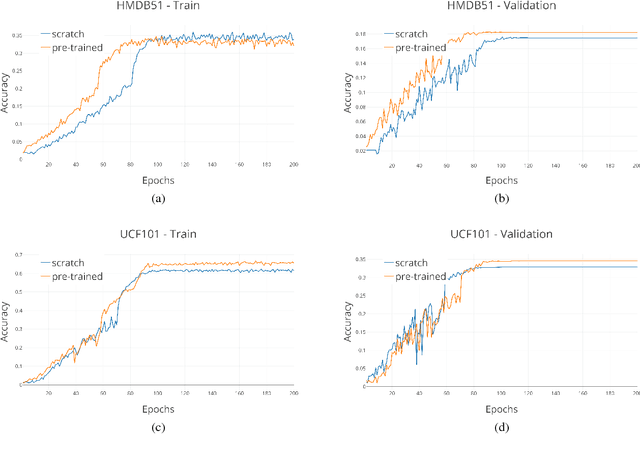

Abstract:We present a novel approach to leverage large unlabeled datasets by pre-training state-of-the-art deep neural networks on randomly-labeled datasets. Specifically, we train the neural networks to memorize arbitrary labels for all the samples in a dataset and use these pre-trained networks as a starting point for regular supervised learning. Our assumption is that the "memorization infrastructure" learned by the network during the random-label training proves to be beneficial for the conventional supervised learning as well. We test the effectiveness of our pre-training on several video action recognition datasets (HMDB51, UCF101, Kinetics) by comparing the results of the same network with and without the random label pre-training. Our approach yields an improvement - ranging from 1.5% on UCF-101 to 5% on Kinetics - in classification accuracy, which calls for further research in this direction.
Offline Signature Verification by Combining Graph Edit Distance and Triplet Networks
Oct 17, 2018

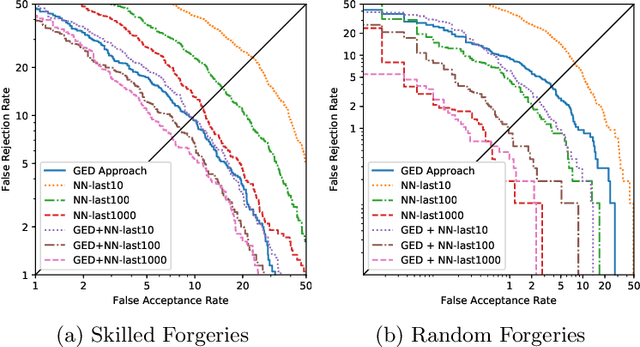

Abstract:Biometric authentication by means of handwritten signatures is a challenging pattern recognition task, which aims to infer a writer model from only a handful of genuine signatures. In order to make it more difficult for a forger to attack the verification system, a promising strategy is to combine different writer models. In this work, we propose to complement a recent structural approach to offline signature verification based on graph edit distance with a statistical approach based on metric learning with deep neural networks. On the MCYT and GPDS benchmark datasets, we demonstrate that combining the structural and statistical models leads to significant improvements in performance, profiting from their complementary properties.
Are You Tampering With My Data?
Aug 21, 2018
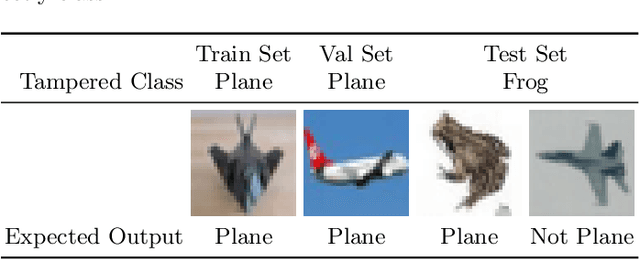
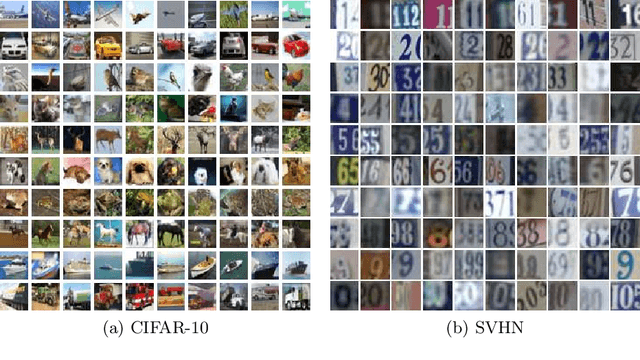
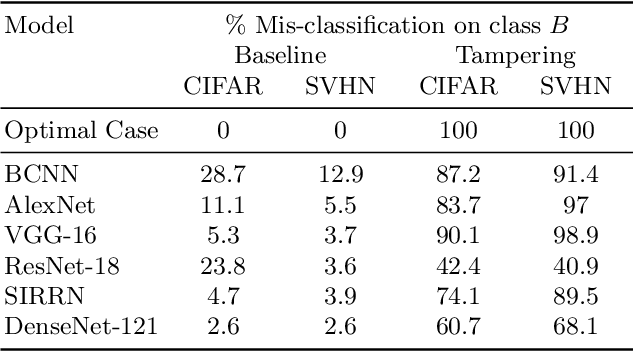
Abstract:We propose a novel approach towards adversarial attacks on neural networks (NN), focusing on tampering the data used for training instead of generating attacks on trained models. Our network-agnostic method creates a backdoor during training which can be exploited at test time to force a neural network to exhibit abnormal behaviour. We demonstrate on two widely used datasets (CIFAR-10 and SVHN) that a universal modification of just one pixel per image for all the images of a class in the training set is enough to corrupt the training procedure of several state-of-the-art deep neural networks causing the networks to misclassify any images to which the modification is applied. Our aim is to bring to the attention of the machine learning community, the possibility that even learning-based methods that are personally trained on public datasets can be subject to attacks by a skillful adversary.
* 18 pages
 Add to Chrome
Add to Chrome Add to Firefox
Add to Firefox Add to Edge
Add to Edge